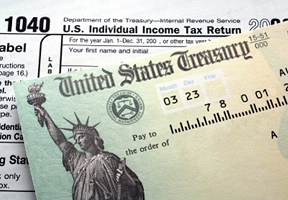

As the April tax-filing deadline approaches, the Internal Revenue Service understands that taxpayers are anxious to get details about their tax refunds. This has led to a number of common myths about refunds that often circulate on social media. While there’s no secret way for taxpayers to find out when their refund will be issued, there are some key facts that can help people understand the refund process. Taxpayers should keep in mind that the IRS issues nine out of ten tax refunds in less than 21 days. And the easiest way to check on a refund is “Where’s My Refund?”, an online tool available on IRS.gov and through the IRS2Go app. Below are a few common myths about tax refunds:
Myth 1: Calling the IRS or a tax professional will provide a better refund date
Many people mistakenly think that talking to the IRS or calling their tax professional is the best way to find out when they will get their tax refund. In reality, the best way to check the status of a refund is online through the “Where’s My Refund?” tool at IRS.gov or via the IRS2Go mobile app. Alternatively, those without Internet access can reach “Where’s My Refund?” by calling the automated refund hotline at 800-829-1954. Taxpayers eager to know when their refund will be arriving should use the “Where’s My Refund?” tool rather than calling and waiting on hold or ordering a tax transcript. “Where’s My Refund?” has the same information available to IRS telephone assistors so there is no need to call unless requested to do so by “Where’s My Refund?”
Myth 2: Ordering a tax transcript is a ‘secret way’ to get a refund date
Ordering a tax transcript will not help taxpayers find out when they will get their tax refund. While taxpayers can use a transcript to validate past income and tax filing status for mortgage, student and small business loan applications and to help with tax preparation, they should use “Where’s My Refund?” to check the status of their refund. “Where’s My Refund?” shows the processing of the tax return from receipt to completion. It will tell the taxpayer their tax return has been received and if the refund has been approved or sent.
Myth 5: Getting a refund this year means there’s no need to adjust withholding for 2019
Annual tax planning is for everyone. To help avoid an unexpected tax outcome next year, taxpayers should make changes now to prepare for when they file 2019 tax returns next year. This can mean adjusting tax withholding with their employer or increasing estimated or additional tax payments. Checking withholding is important every year, and the IRS encourages people to do a Paycheck Checkup. This is especially important for anyone who got an unexpected result from filing their tax return this year because they had too much or too little withheld from their paycheck in 2018. Use the IRS Withholding Calculator to determine whether the right amount is being withheld. If an adjustment is needed, taxpayers should submit a 2019 Form W-4, Employee’s Withholding Allowance Certificate, to their employer as soon as possible.









